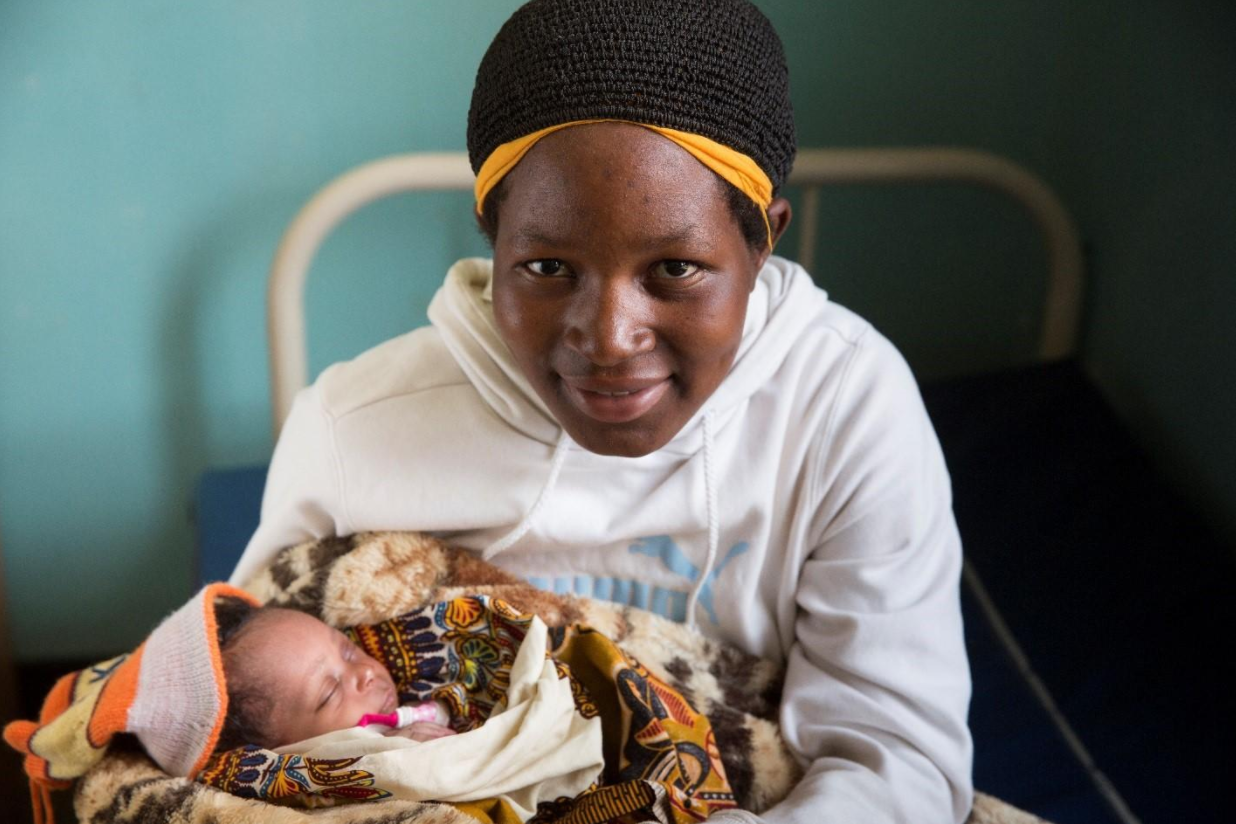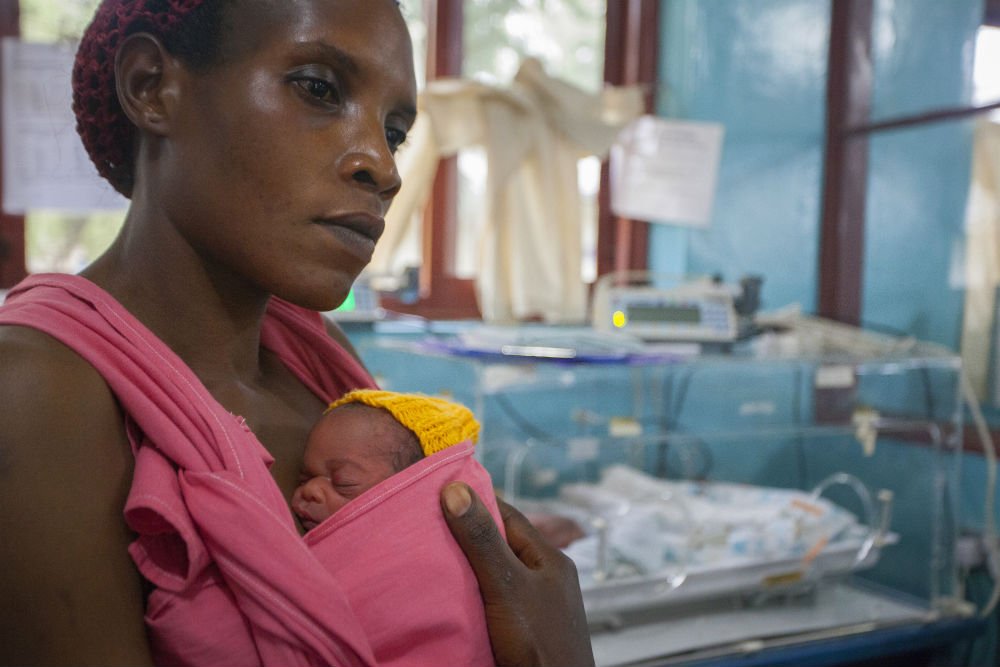By: Joy Marini, MS, PA-C, and Winnie Mwebesa, MD.
Hours away from bustling Kampala, in a rural district of central Uganda, the sound of a hungry newborn crying echoes through the halls of Nakaseke Hospital. As we enter the hospital’s maternity ward, we see an exhausted but happy midwife, Sister Eva Nangalo.
The night before we arrived, a medical team at the hospital believed that Joseph* would not survive the birth. But Nangalo stood firm against their opinion. And she was right. She had used all of her skills to save this tiny newborn baby.
“I think I was born to be a midwife,” says Nangalo, 37.
We weren’t expecting to find a tireless champion for moms and babies in this countryside community hospital miles away from the capital, where they had not had running water or electricity for two days.

Added Nangalo, “I feel part of the solution. When women are in labor, you will find them crying in pain. A government hospital like ours attends to women from all backgrounds — some are very poor, but that does not put me off. I come to their rescue. A woman who is in pain needs love. She needs to be comforted and shown that someone cares. That is what I do for them.”
Nangalo’s journey into midwifery was not an easy one. Against the wishes of her father, she entered midwifery school and learned that of the 103 new entrants, she was the only one who did not have an advanced level of secondary schooling. But what she lacked in qualifications, Nangalo made up for in passion and hard work.
This passion led her to grow her midwifery skills through Helping Babies Breathe (HBB), a training program administered by Save the Children in partnership with Johnson & Johnson. Helping Babies Breathe is helping to significantly improve outcomes among newborns in Malawi and Uganda. During 2016, in Malawi, the project was implemented in six districts (Dedza, Mulanje, Mzimba North, Mzimba South, Neno and Ntchisi) with four districts focusing on intensive quality improvement activities across eight high volume health facilities. During 2016, a total of 77,377 babies were born alive in project-supported facilities. The number of babies asphyxiated in 2016 was 4,706, with 81.1 percent (3,816) of those babies being successfully resuscitated.
In Uganda, the project was implemented in three districts (Kampala, Mukono and Wakiso) across 32 high volume health facilities that reach vulnerable populations, including the urban poor. Across the 32 health facilities with a trained provider, 97 percent of babies born not breathing were successfully resuscitated. The number of babies resuscitated in 2016 was 2,003, with 96.5 percent (1,933) of those babies being successfully resuscitated.
“I reflected on what I was learning in the HBB training and compared it to the care I provided to babies previously,” explains Nangalo. With sadness, she says she realized during the training that she and her colleagues must have considered some babies to be stillborn right after birth, not realizing those babies could be supported to start breathing.
She adds, “It breaks my heart to see a baby or a mother die. I always imagine that the babies might become someone important in life, or do something really great. So why shouldn’t we give them a chance?”
Nangalo is now part of the global midwifery advocacy strategy group that is advocating for midwifery voices to be recognized around the world.
You can take action to urge Ugandan leaders to prioritize matnernal and child health. Download the Global Citizen app now and start taking action.
*Name changed to protect the identity of the child.

A new mother wraps her two-day-old preterm baby boy onto her bare skin to keep him warm at a hospital in Uganda. Save the Children trains hospital staff to promote the technique known as "Kangaroo Mother Care" (KMC) to encourage the survival of prematurely born babies. The prolonged skin-to-skin contact helps the youngest and most vulnerable babies by promoting breastfeeding and reducing infection—all the while providing a great bonding opportunity for mom and baby.
Not shown in the photo is the baby’s twin sister, who was in an incubator at the time of this photograph. The twins were born six weeks premature. The mother heard about KMC during her antenatal care sessions and said that she will be an advocate for KMC with her family and friends, as she knows that it will help her babies achieve normal brain growth and allow them time to develop a special bond.
